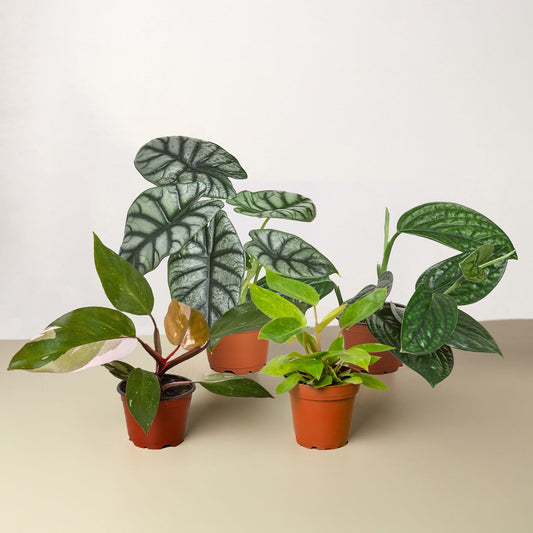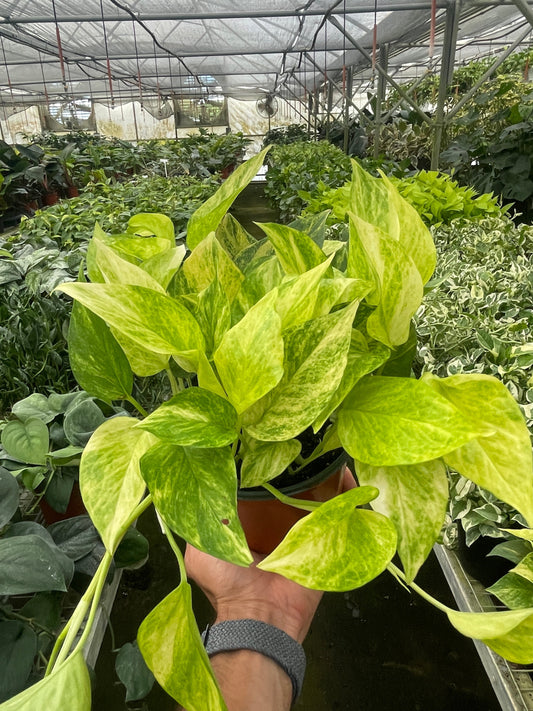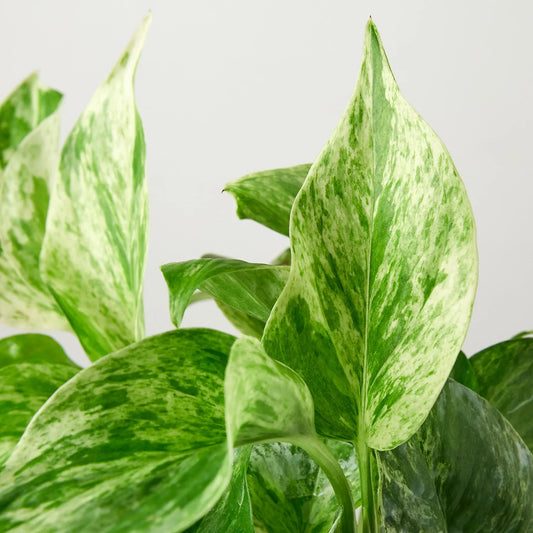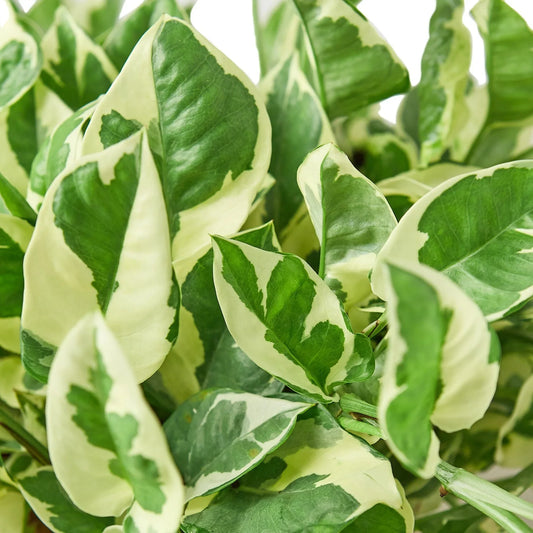Types of Dendrobium Orchid Varieties: The Complete Guide
Cafe Planta Team
Imagine bringing a touch of exotic elegance into your home with a plant that’s as striking as it is rewarding. Dendrobium orchids, with their diverse range of colors and forms, can do just that. These orchids are not only beautiful but also surprisingly resilient, making them a favorite among plant lovers of all experience levels.
In this article, we'll explore a variety of Dendrobium orchid types, offering a closer look at their unique characteristics and how to care for them. Whether you're a seasoned orchid grower or just starting your plant journey, you'll find plenty of helpful tips and insights to keep your Dendrobiums thriving.
The Fascinating World of Dendrobium Orchids
Dendrobium orchids are one of the largest orchid genera, boasting over 1,800 species. Originating from diverse climates across Asia and Australia, these orchids have adapted to a wide range of environments, from tropical rainforests to arid deserts. This adaptability is part of what makes them so appealing to plant enthusiasts.
Let's start with a basic understanding of their structure. Dendrobiums generally have a sympodial growth pattern, meaning they grow in a horizontal manner, producing new shoots alongside the old ones. This growth pattern can result in a dense, bushy appearance that many find charming. The flowers, often growing in clusters, range from delicate whites and pinks to vibrant purples and yellows. Now that we've set the stage, let's explore some popular Dendrobium types you might consider adding to your collection.
Types of Dendrobium Orchids
Dendrobium Nobile
If you've ever seen pictures of Dendrobium orchids, chances are you've come across the Dendrobium Nobile. Known for its striking beauty and fragrance, this type is a showstopper. The Nobile orchids typically have arching canes covered with clusters of flowers in shades of white, pink, purple, and even yellow. They bloom once a year, usually in late winter or early spring, and the blooms can last for several weeks.
The care for Dendrobium Nobile is relatively straightforward. They thrive in bright, indirect light and prefer cooler temperatures, especially during the winter months. This cooling period is crucial as it triggers the flowering process. When it comes to watering, allow the top inch of soil to dry out between waterings during the growing season, and reduce watering in the winter.
- Light: Bright, indirect light
- Water: Allow the top inch of soil to dry out between waterings
- Temperature: Cooler temperatures, especially in winter
Dendrobium Phalaenopsis
Another popular choice is the Dendrobium Phalaenopsis, often called the "Phal Dendrobium." This variety is known for its long-lasting flowers that resemble those of the Phalaenopsis or moth orchid. The blooms are usually large and come in shades of white, purple, and pink.
The Phal Dendrobium prefers warm temperatures and high humidity, making it a perfect candidate for indoor growing. It enjoys bright light, but not direct sunlight, which can scorch its leaves. Watering should be consistent, allowing the medium to dry out slightly between waterings.
- Light: Bright, indirect light
- Water: Keep the medium slightly moist
- Temperature: Warm, with high humidity
Dendrobium Kingianum
The Dendrobium Kingianum is a versatile and resilient orchid that can adapt to various conditions. It's often called the "Pink Rock Orchid" due to its natural pinkish blooms and its ability to grow on rocky surfaces in its native Australia. These orchids are smaller in stature, making them a great option for those with limited space.
Kingianum orchids prefer bright light and can tolerate some direct sunlight. They need a dry rest period in winter to encourage blooming, so reduce watering during this time. They're also quite tolerant of temperature fluctuations, which adds to their charm as a low-maintenance houseplant.
- Light: Bright light, some direct sun
- Water: Reduce watering in winter
- Temperature: Tolerant of fluctuations
Dendrobium Aggregatum
Dendrobium Aggregatum, also known as the "Pineapple Orchid," is beloved for its brilliant yellow flowers that form in dense clusters resembling tiny pineapples. These orchids are a sight to behold when in full bloom, usually in the spring.
This variety thrives in bright, indirect light and benefits from a cooler winter period, similar to the Nobile. Allowing the plant to dry out between waterings is essential, especially during its rest period in winter. This technique encourages more robust blooms come spring.
- Light: Bright, indirect light
- Water: Let the plant dry out between waterings
- Temperature: Cooler during winter
Caring for Your Dendrobium Orchids
Now that we've met some popular Dendrobium types, let's chat about how to keep these beauties thriving. While each variety has its preferences, there are some general care tips that apply to most Dendrobium orchids. Understanding these basics will set you up for success.
Light and Temperature
Most Dendrobium orchids prefer bright, indirect light. This mimics their natural habitat where they're often shaded by taller trees. Direct sunlight can cause leaf burn, so it's essential to find a spot where your orchid can bask in filtered light. A north or east-facing window often works well.
Temperature plays a crucial role in orchid care. These plants generally enjoy warm days and cooler nights. Some species, like the Nobile, require a more pronounced drop in temperature to trigger blooming. If your home tends to stay warm year-round, placing your orchid near a window can help create that needed temperature variation.
Watering and Humidity
Orchids are sensitive to overwatering, which can lead to root rot. A good rule of thumb is to allow the top inch of the potting medium to dry out before watering again. During their active growth phase, usually spring and summer, your orchids will need more water. In contrast, reduce watering during the fall and winter when the plants enter a rest period.
Humidity is another important factor. Dendrobiums generally prefer humidity levels between 50% and 70%. If you live in a dry climate or have heating systems that strip moisture from the air, consider using a humidifier or placing a tray of water near your plants to boost humidity levels.
Potting and Repotting
Choosing the right pot and potting medium is key to healthy orchids. Dendrobium orchids prefer a well-draining medium, often a mix of bark, perlite, and charcoal. This mimics their natural epiphytic growing conditions, where they attach to trees rather than growing in soil.
Repotting is usually necessary every two to three years or when the medium breaks down. It’s also a good opportunity to check the roots and trim away any that are dead or rotting. When repotting, choose a pot that allows for some drainage and doesn’t hold excess water.
Dealing with Pests and Diseases
Orchids can sometimes attract pests like spider mites, aphids, and mealybugs. Regularly inspecting your plants will help catch these invaders early. A simple spray of water can often dislodge pests, or you can use a gentle insecticidal soap.
Fungal infections are often a result of too much moisture and poor air circulation. Ensure your orchids are in a well-ventilated area and avoid letting water sit on the leaves. If you notice any signs of disease, such as black spots or wilting, remove the affected parts and treat the plant with a fungicide.
Designing with Dendrobium Orchids
Orchids are not just plants; they're a statement. Incorporating Dendrobium orchids into your home decor can elevate your space with minimal effort. Their vibrant colors and unique forms make them a perfect focal point in any room.
Consider placing your orchids in areas where they can be admired up close. A well-lit bathroom, kitchen windowsill, or office desk can be excellent spots. Pairing orchids with complementary decor, like a simple vase or a decorative pot, can enhance their natural beauty.
For those who enjoy a bit of creativity, try grouping different orchid varieties together. This not only adds visual interest but also creates a mini orchid garden indoors. Mixing various textures and colors can make your display pop.
Common Challenges and How to Overcome Them
Growing orchids can present some challenges, but with a little patience and observation, many issues can be resolved. Here are a few common problems that orchid growers face and some tips on how to tackle them.
Yellowing Leaves
Yellowing leaves can be a sign of various issues, from overwatering to nutrient deficiencies. If you notice yellow leaves, check your watering schedule first. Remember, it's better to underwater than overwater.
Bud Blast
Bud blast, where buds drop before blooming, can result from sudden changes in environment, such as temperature or humidity shifts. Try to keep your orchids in a stable environment. Avoid moving them around too much, especially when they're about to bloom.
Root Rot
Root rot is often caused by poor drainage and overwatering. If you suspect root rot, gently remove the plant from its pot and trim away any mushy roots. Repot in fresh, well-draining medium.
Choosing the Right Dendrobium for Your Space
When selecting a Dendrobium orchid for your home, consider your environment and the care level you're able to provide. If you're new to orchids, starting with a hardy variety like the Dendrobium Phalaenopsis might be a wise choice. These orchids are more forgiving and adapt well to indoor conditions.
For those with some experience, the Dendrobium Nobile offers a rewarding challenge with its requirement for a distinct cooling period. Its stunning blooms are worth the effort, making it a popular choice for more seasoned growers.
Remember, the best orchid is one that fits your lifestyle and brings you joy. With so many varieties to choose from, you're sure to find a Dendrobium that complements your home and level of expertise.
Final Thoughts
Dendrobium orchids offer a delightful blend of beauty and diversity, making them a fantastic addition to any plant collection. Whether you’re captivated by the elegance of the Nobile or the resilience of the Kingianum, there's a Dendrobium orchid out there for every plant lover.
At Cafe Planta, we’re passionate about helping you succeed with your plant care endeavors. We offer a range of houseplants and accessories to support your green thumb. If you have questions or need advice, don’t hesitate to email us or reach out on Instagram. We believe in the power of plants to bring people together, and we're excited to share this journey with you.



















